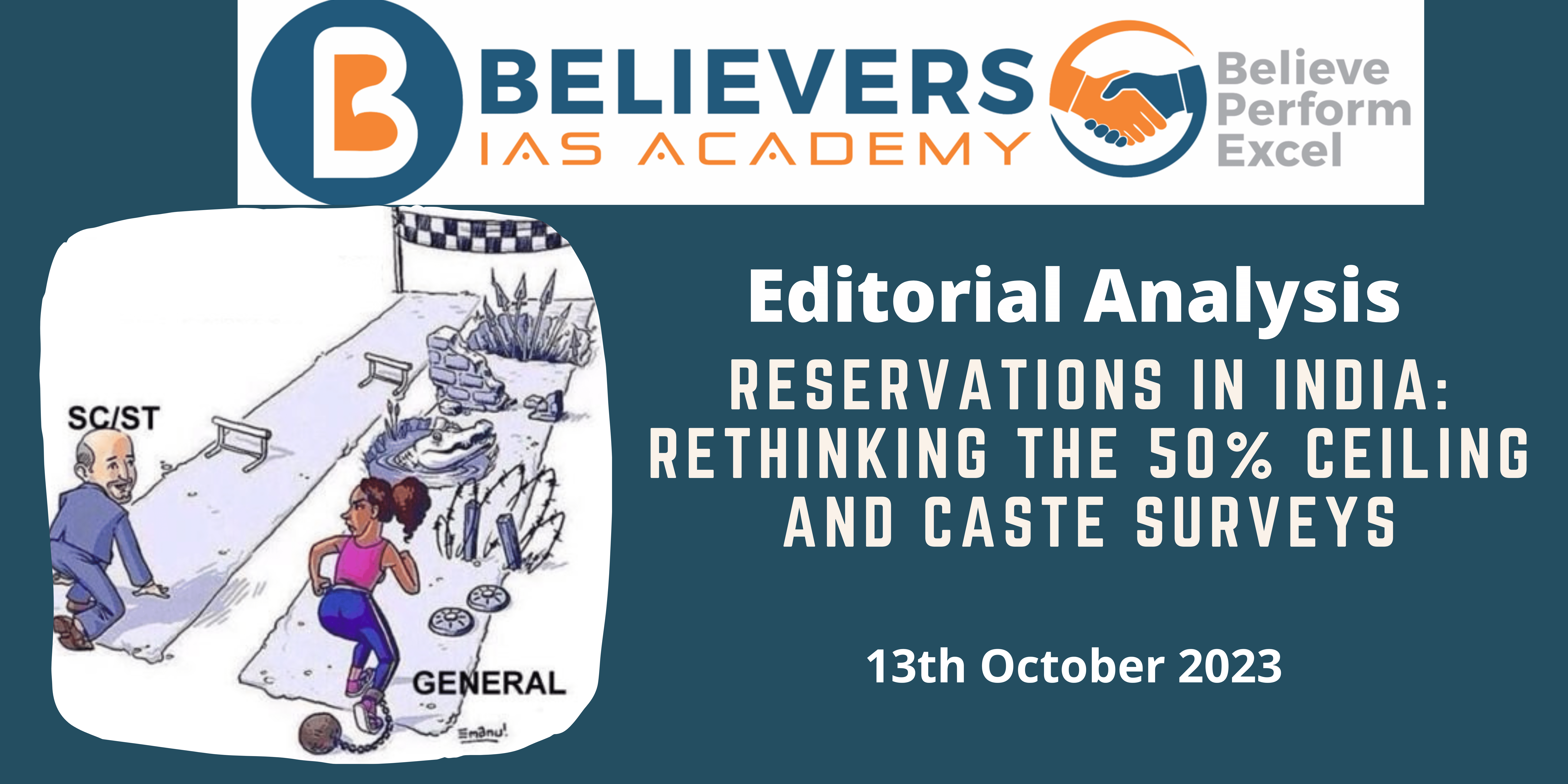Reservations in India: Rethinking the 50% Ceiling and Caste Surveys
Context:
The release of the caste survey data by the Bihar government, revealing that the Other Backward Classes (OBCs), Scheduled Castes (SCs), and Scheduled Tribes (STs) constitute approximately 84% of the population, rekindles the discussion regarding the 50% reservation cap set by the Supreme Court in the Indra Sawhney case of 1992.
Relevance:
GS-02, GS-01 (Population and Associated Issues) (Government Policies & Interventions)
Prelims:
Census, Socio-Economic and Caste Census, Rohini commission
Mains Question:
Discuss the implications of the Bihar caste survey data on the 50% ceiling for caste-based reservations, as set by the Supreme Court in the Indra Sawhney case of 1992. (10 marks, 150 words).
Dimensions of the Article:
- 50% Reservation Ceiling
- Historical Context of Reservation Limit
- Socio-Economic Data and Caste Categories
- Concept of Representation According to Population
- Caste Census and Fragmented Polity
50% Reservation Ceiling:
- The 50% reservation limit is viewed by many as arbitrary since it lacks substantive numerical justification.
- States like Tamil Nadu already provide 69% reservation through a 1994 law, safeguarded from judicial review by inclusion in the Ninth Schedule of the Constitution.
- The introduction of 10% reservation for Economically Weaker Sections (EWS) by the Central government surpasses the 50% ceiling, further questioning the validity of this cap.
Historical Context of Reservation Limit:
- The 50% ceiling for reservations in government jobs was established with limited reasoning in past judgments.
- The N.M. Thomas case (1976) saw the Supreme Court questioning the rationality of the 50% limit, yet it became a fundamental right in the Mandal case (Indra Sawhney).
- Revising this limit requires a principled stance and could hinge on the readiness of a significant state like Bihar to challenge it legally.
Socio-Economic Data and Caste Categories:
- The release of socio-economic data is crucial as it can lead to requests for reshaping caste categories.
- The OBC category encompasses diverse castes, with some being economically advanced, potentially sidelining the more disadvantaged.
- There is a conceptual issue concerning the classification of OBCs, as it lacks clarity and may necessitate significant jurisprudential reconsideration.
Concept of Representation According to Population:
- Political slogans advocating “representation according to population” may prompt individual caste groups to demand specific reservations based on their numbers.
- These demands could have significant implications, potentially leading to sub-categorization and questions about the inclusion of certain castes on the list.
Caste Census and Fragmented Polity:
- Critics are concerned that a caste-based census may intensify caste identities and create a divided polity.
- However, the existence of these identities is undeniable, even if not officially documented.
- The discourse should shift to addressing the diminishing availability of government jobs and the size of the job pie for equitable distribution.
Way Forward:
- A comprehensive reconsideration of the 50% reservation ceiling is necessary, with a legal challenge supported by pertinent data and a favorable political environment.
- Sub-categorization within the OBC category should be examined, promoting the inclusion of underrepresented communities.
- The discourse on reservations should extend to discussing the shrinking pool of available jobs.
Conclusion:
The release of caste survey data in Bihar ignites the debate surrounding the 50% reservation limit imposed by the Supreme Court. While concerns about the potential accentuation of caste identities and fragmentation of the polity exist, addressing the existing realities is essential. A nuanced approach to the reservation system, supported by comprehensive data and principled legal action, can pave the way for equitable representation and social justice in India.



